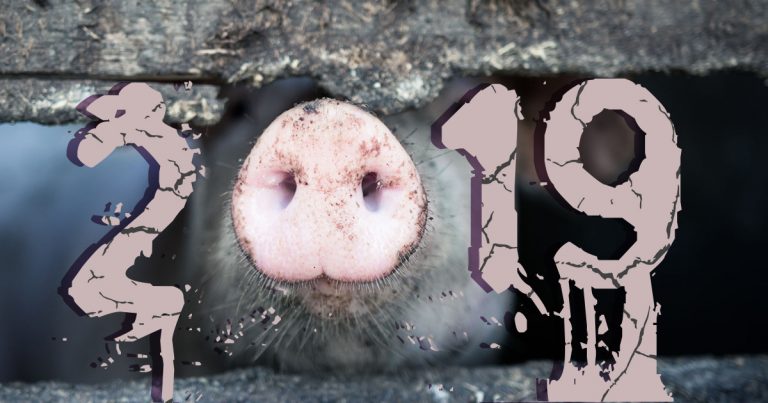What to play with children before school

Hi, my name is Anya, I'm from Mosigra and occasionally I will write something on our blog.
The question of what to play with children didn’t really bother anyone until the seventeenth century. There is even a theory that in the Middle Ages children were perceived as young adults and raised as in the army. About this wrote Philippe Aries in the book "The Child and Family Life under the Old Order." He made such a conclusion, because he had seen enough of ancient miniatures and icons and found that the children on them are some old people, they almost do not play games and generally differ from adults only in their growth. (About this there is still a high article in more detail.)
Then other researchers of medieval life, Francis and Joseph Gies wrote a book about the fact that Aries is not quite right: “On hand-written miniatures, children's clothes are simpler and shorter than adult toilets. Boys wear a shirt, leggings and a caftan, girls wear a dress and tunic. Miniatures depict children playing ball, floating, archery, controlling puppets, enjoying puppet shows – a range of entertainment typical of children at all times. ” The book is called Family and Marriage in the Middle Ages.
In short, one thing is known: the treatment of children was such to itself.
It is known thanks to Jean-Jacques Rousseau, who stated this in his treatise "Emil, or On Education" in 1761: "Children do not know: with those false concepts that are about him, the further they go, the more they are mistaken. The wisest of us are chasing what it is important for people to know, not taking into account whether children are able to learn this. They are constantly looking for an adult in the child, not thinking about what he is before becoming an adult. ”
Rousseau drowned for the development of individual qualities, for a democratic upbringing, against beatings and drill (although he suggested severe punishments for serious misconduct: if you broke a window – sleep under a draft, you'll know). And he gave something like instructions to the child: he divided the first 18 years of the life of the conditional Emil into four periods and wrote that at what age the child should study and do. I didn’t rest on the game, more on labor and science. But he drew attention, for example, to the fact that you can use the game to interest the child in learning: “Aren't you able to make any influence you like on him? Are his activities, games, pleasures, sorrows not in your hands, even without his knowledge? Of course, he should do only what he wants; but he should only want what you want from him. "
As a result, they burned the treatise: the Catholic Church did not like the passages where Rousseau criticizes religion. But the foundations were laid, pedagogy and child psychology went further. And the farther, the more adults paid attention to the game and what place it takes in the upbringing and development of the child.
Here is the domestic teacher Konstantin Ushinsky in 1869 writes in the book “Man as a subject of upbringing”: “For a child, play is a reality, and a reality much more interesting than the one that surrounds it. It is more interesting for the child precisely because it is more understandable; but it’s more understandable to him because partly there is his own creation. ”
Or here’s the psychiatrist Alfred Adler, 1927, “Understand the nature of man”: “The way a child approaches the game, his choice of the game and the degree of importance he attaches to it testify to his social attitude, his attitude to the world around him and his kind . Observing a playing child, we see his attitude to life in full; the game is of the utmost importance to every child. ”
Or here’s a child psychologist Margarita Istomina (Paramonova) from the Russian Association of Occupational Therapists, 2019, saying over the phone: “We have come to the conclusion that the value of the game is obvious. In the circle of specialists with whom I communicate, in our community there is no need to prove and there is no doubt that the game is an important thing. We greatly appreciate the game and the child’s desire to play. In our April rehabilitation center, children are engaged in games through the game and only this way. ”
Okay, what to play? And How? In two years you can already give cubes? But these are all educational rpg and puzzles – when is it possible? Do they really develop something?
Gaming era
I spoke with occupational therapists and psychologists at the rehabilitation centers April, MRTs-Children and Three Sisters. And in general, everyone has this approach.
The easiest way to understand what is useful for a child is to give him a mountain of toys and see what he chooses and how he will play it. First of all, the game should bring pleasure, and then it can already be used as an instrument for the development or development of some skill. If the game is super-useful, but the child does not like it – do not even try to impose.
And if you don’t like anything, there is the concept of gaming eras. It’s also something like the instructions for a child that Russo did, only very, very detailed and modern. This is the development of domestic teachers Ima Zakharova and Elena Morzhina. They divided the first six years of a child's life into eight stages. Everyone wrote: what at this age the child already knows what should learn and what games will help in this. And put in a training manual called "Game pedagogy."
It is suitable for children with special needs, too, and the fact that parents can work on it without constant reconciliation with specialists.
Margarita Istomina said about her:
“I myself and many of my colleagues work in this concept. This is a great analysis of the research and personal thirty years of experience of the authors. This concept does not contradict either basic philosophical principles, or what we know about the development of the child through pediatrics and medical literature. Flipping through the tables, you can see at what stage the child is now, how ready or not ready to move on. Or why he returned to the previous stage – this also happens. "

It’s easy to work: open the table of the stage, which corresponds to the chronological age of the child. There is a list of skills and opportunities. For example, 1-2 years: actively imitates the actions of an adult, seeks protection and comfort in an adult, shyness and first obstinacy appear, and much, much more. Check the boxes wherever you recognize your child. And if the table is all or almost all in the checkboxes, then your child is at this stage and the games will suit him from here. You can check the next stage, suddenly the current one has already outgrown. If there are few ticks, it may make sense to roll back one step and check there.
Thus, specialists in rehabilitation centers work with children with cognitive and physical impairments. They look at what stage the child is now at and understand how and what to play with him in order to go to the next level.
Briefly about the stages and toys in the first 6 years
From birth to 3 months. The first toy is own hands. The first skills are face recognition, reaction to facial expressions, sounds and objects. He sees an adult – and smiles at him. He sees a happy adult – and is infected by joy from him. Characteristic toys: mobiles, any fairly safe bright or quiet objects.
3-6 months. It starts to grab and pull in your mouth. Moves, distinguishes between positive and negative emotions, highlights a close adult. Characteristic toys: with different surfaces (ribbed, fluffy, velvety), with sound effects, some bright and large, so that you can grab, but can not be swallowed.
6-9 months. Able to crawl, hold a spoon, scatter objects, play with food. He understands simple gestures such as a nod, explores the surrounding space. He begins to understand some words and he babbles. Games: hide and seek, in a ball, outdoor games with a climax (“By bumps, by bumps, into the hole!”)
9-12 months. Himself sits and learns to walk or already walks. Holds posture and balance, uses two hands, imitates adults, distinguishes between his own and other adults. At this stage, you can play with your child on an equal footing. In games, the plot appears: feed the bear, lay the doll. Toys: sorters, pyramids, figures of people and animals.
From 1 to 2 years. Welcome to the first crisis! The first protest reactions, negativism, and resistance appear. For the first time, a child begins to experience disgust, fear. Explores the boundaries of what is permitted and safe. He understands what is “mine” and rewards objects with this new concept. Games: hide and seek, catch-up, pyramids, dice, turrets.
From 2 to 3 years. He begins to play with emotions and his physical image: he grimaces, changes clothes. He plays mom or dad, a frog and a crocodile. Composes fairy tales, imbued with confusion. Here you can play adventure stories. Very simple desktops are also suitable.
From 3 to 4 years. The second crisis! Resists adults and does the opposite, defends his desires and provokes parents. The game learns to act according to plan, although the plan may change ten times before the end of the game. The imagination and fear of fictional creatures such as Baba Yaga develops. Games: with drawing, modeling and construction, with everyday subjects.
From 4 to 5 years. The time of major designers, jengi and lego. Games: on the topic of professions, animals, the world.
From 5 to 6 years. Gender differences appear, a desire to help adults. Here you can play simple cooperative desks. The child plays in superheroes, in war, in the hospital. He distinguishes between fantasy and reality, is oriented in space, constantly asks “why?”. Here you can take the tables and learn to play by the rules, play fears and aggression on the plots.
And without drill
There is still a moment about parents. Parents often do not know how to play with the child. Not because they are so bad, but because adults and children see the world differently. And if for an adult the instruction “Pull yourself up five times” is understandable – both how to carry it out and what will be of its use, then the child in it does not see any pleasure, no fun, no benefit (because it still does not know how to look so far into future, where the effect of pull-ups appears).
Psychologist Karl Brish in the book "Theria of Affection and the Education of Happy People" advises:
– “sincerely, joyfully get involved in the situation, encourage the activity of the baby, inspire him with his condition”,
– Rejoice at every achievement of the child, even if it seems to us insignificant. For example, a child pressed a button – and heard a sound. For him, this means that he knows how to influence the world, and this enthuses. It is important to share this enthusiasm with it.
The authors of "Game pedagogy" advise more:
– Do not give instructions, instructions, do not make comments, do not try to control the child during the game. Just being around is emotionally and physically. Since the child through the game explores the world around him, it is important for him to feel comfortable and safe. Close adults give this feeling.
– It happens that a child loves a toy so much that it carries it through all the stages. This is normal.
– Still – often children get annoyed, stop playing or ignore the adult. Most likely, this means that the child is tired, and then you can take the games from the previous stage – they are so simple that they will have a calming effect. Or just fall behind the child. Let him rest.
And in rehabilitation centers, where children generally play almost all the time, parents are invited to classes. And the specialist (occupational therapist or psychologist) simultaneously plays with the child and teaches the adult how to behave with him. They told me amazingly cute stories about how mother and son enthusiastically played dinosaurs or how families with children who went to the same specialist together made friends and left the whole crowd to relax at sea. And some experts even compose something like a recipe after rehabilitation: a list of recommended games and how to play them.





